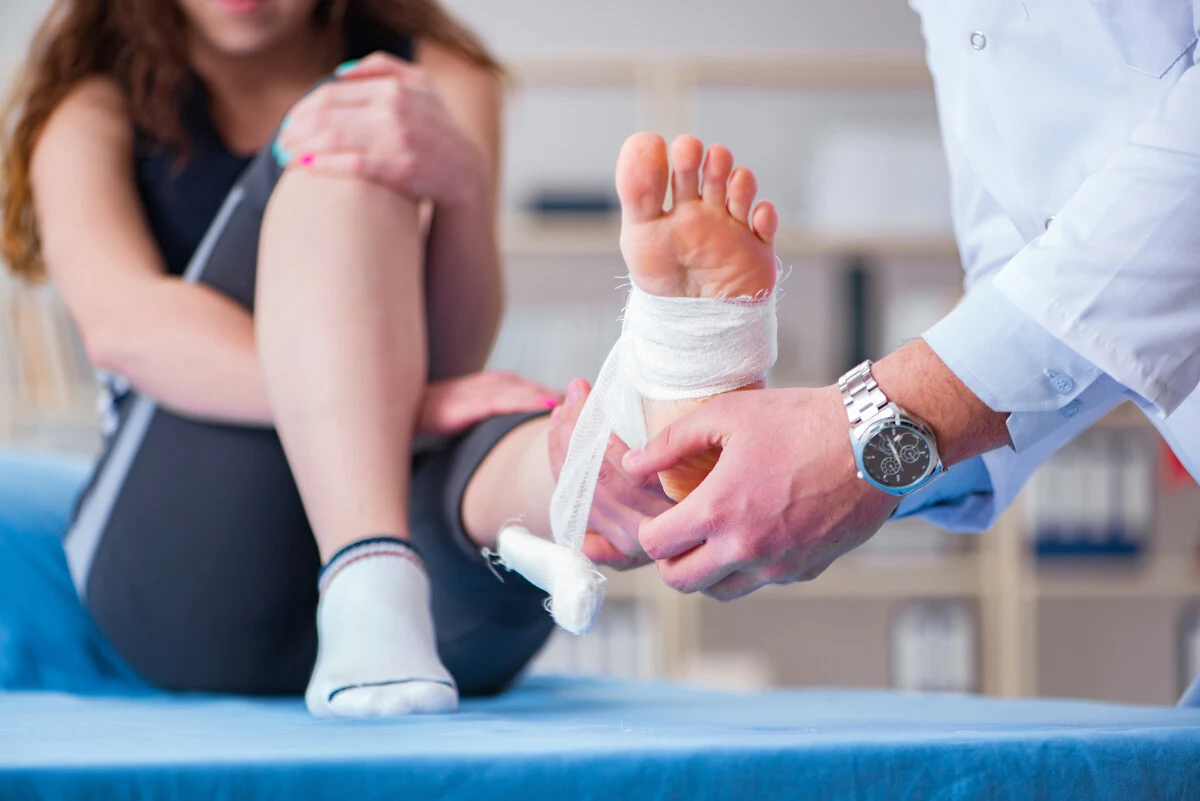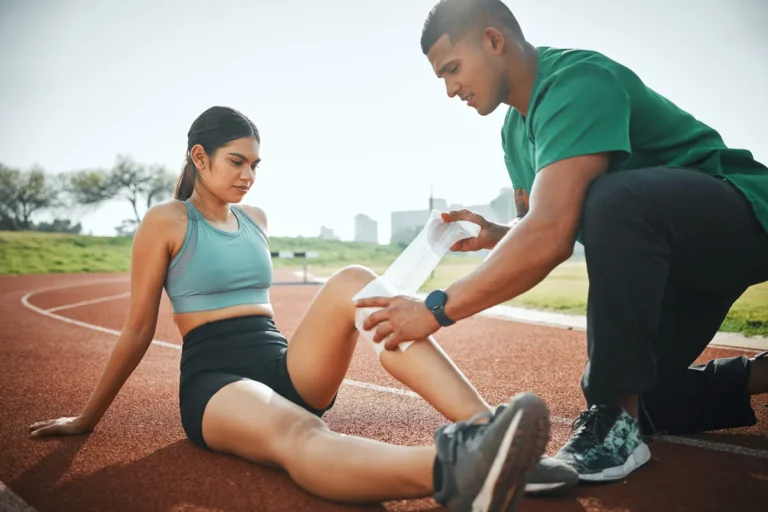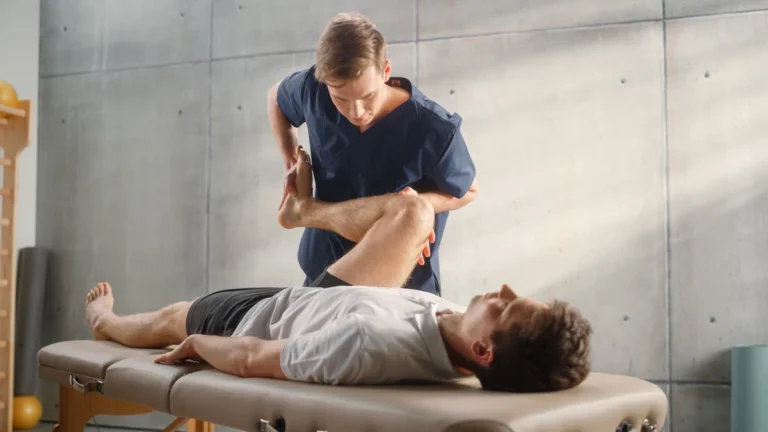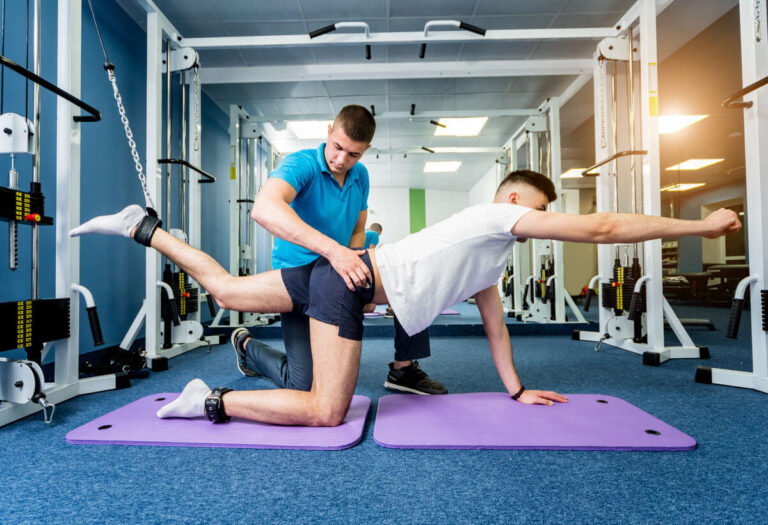
Why Understanding Sports Injuries Matters
Staying physically active is one of the most important things you can do for your health, longevity, and overall sense of well-being. Whether you’re running in Durham’s parks, taking part in local leagues, or simply enjoying a weekend pick-up game, regular exercise brings immense benefits to both body and mind. However, it’s important to recognize that with increased activity comes an inherent risk of sports injuries, which are surprisingly common even among casual and seasoned athletes alike. Understanding the causes, risks, and solutions for these injuries is the first step toward staying healthy, confident, and active well into the future.
For active adults, the potential for injury doesn’t mean scaling back on your passions or goals. Instead, it means exercising smartly and responding quickly when aches and pains arise. Many injuries can be avoided or minimized when you know what to look out for, but even the most diligent athlete can occasionally be sidelined. That’s why building awareness around the prevention of sports injuries, recognizing signs of trouble, and knowing when to seek help is vital for sustained performance and a happy, healthy lifestyle.
At Bull City PT, we understand that every person’s body—and their journey—is unique. That’s why our approach to physical therapy is personalized and rooted in the latest research. Not only do we help our clients recover and heal, but we’re passionate about proactive education: empowering you with the tools, knowledge, and habits necessary to avoid injuries before they start. Through direct access care, flexible scheduling, and a compassionate, supportive environment, Bull City PT is committed to helping you move better, feel stronger, and return to the activities you love—safely and confidently.
Why Is Injury Prevention Important for Active Adults?
Injury prevention isn’t just about sidestepping pain; it’s about ensuring you can keep doing what you love, year after year. For busy adults balancing exercise with work, family, and other obligations, downtime from an injury can be disruptive—both physically and emotionally. By adopting a prevention-first mindset and seeking prompt guidance when needed, you can greatly reduce the risk of small problems becoming big setbacks. With Bull City PT, you have a partner invested in your long-term, active lifestyle every step of the way.
What Are the 5 Common Sports Injuries?
If you’re an active adult, understanding the five most common sports injuries can help you stay healthy, confident, and quick on your feet. These injuries—knee injuries, ankle sprains, hamstring strains, shin splints, and tennis elbow—can impact anyone from weekend warriors to avid runners. By recognizing the signs, knowing how to prevent them, and seeking proper treatment, you can continue enjoying your favorite activities with less risk and more resilience.
Knee Injuries: ACL Tears, Meniscus Tears, Runner’s Knee
The knee pain is among the most frequently injured joints, especially for runners and those engaging in court or field sports. Common knee injuries include anterior cruciate ligament (ACL) tears, meniscus tears, and “runner’s knee” (patellofemoral pain syndrome). Symptoms like clicking, swelling, instability, or pain during activities are important signs to watch. At Bull City PT, our specialists provide targeted treatment plans to restore stability, strength, and confidence in your knees so you can keep moving safely.
Ankle Sprains: Ligament Injuries and Instability
Rolling or twisting your ankle often leads to ligament injuries—better known as ankle sprains. These are among the top “sideline” culprits for athletes of all ages. If you notice pain, swelling, bruising, or a feeling of weakness following a twist or misstep, don’t ignore it. With individualized care from Bull City PT, recovery focuses on regaining a full range of motion and preventing future sprains through dynamic strengthening exercises and stability training.
Hamstring Strain: Pulled or Torn Hamstring Muscles
Hamstring strains often occur during high-speed activities like sprinting or sudden directional changes. A sharp back-of-thigh pain, bruising, or weakness can signal a strain or tear. Quick action is key—gentle stretching, supervised strengthening, and a structured progression with Bull City PT helps you avoid setbacks and return to your favorite workouts efficiently and safely.
Shin Splints: Impact Pain in the Lower Leg
Active adults who increase intensity or mileage too quickly may develop shin splints (medial tibial stress syndrome). Persistent, aching pain along the inner edge of the shin is a hallmark sign. Early intervention—including assessment of gait, footwear, and training habits—paired with expert education at Bull City PT, keeps minor irritation from progressing into something more serious.
Tennis Elbow: Overuse Injuries Affecting the Forearm
Repetitive gripping or wrist motion, common in racquet sports, can irritate the tendons on the outside of your elbow—leading to what’s known as tennis elbow (lateral epicondylitis). Symptoms such as tenderness on the elbow’s outer side or weakened grip deserve prompt attention. Physical therapy at Bull City PT targets not only pain relief, but also guides you through gradual loading and activity-specific modifications for lasting relief.
Recognizing When to Seek Help
Don’t wait for a minor issue to become a major setback. If your pain lingers, mobility decreases, or you lose confidence in any movement, Bull City PT’s caring professionals are here to help. Our evidence-based approach for active adults addresses both symptom management and the root cause—so you can get back to the activities you love, pain-free and stronger than before!
What Are the 4 Major Injuries in Sports?
When it comes to athletic pursuits, certain injuries stand out as more serious and impactful than others. The four major sports injuries—sprains, strains, fractures, and dislocations—can affect anyone from weekend warriors to competitive athletes, often requiring targeted intervention and a thoughtful recovery plan. Understanding the nature of these injuries and the role that expert guidance at Bull City PT plays in both recovery and prevention is key for active adults who want to stay in the game while protecting their long-term health.
What are Sprains, and How Can They Affect You?
Sprains occur when ligaments—the tough bands connecting bones at a joint—are stretched or torn. The most frequent sites for sprains include the ankle, knee, and wrist, often happening during sudden twists or impacts. Symptoms include pain, swelling, bruising, and instability that can sideline even the most dedicated fitness enthusiast. Effective treatment often begins with rest, ice, compression, and elevation (RICE), but for moderate to severe sprains, guided recovery led by the team at Bull City PT is crucial. Through a blend of personalized exercises, manual therapy, and progressive strengthening, we help you restore full function while focusing on long-term joint health and future injury prevention.
How Do Strains Differ from Sprains?
Strains involve injury to muscles or tendons—the structures that connect muscle to bone. Sports like running, soccer, and tennis commonly see hamstring, back, or groin strains due to excessive stretching or sudden overuse. These injuries manifest as sharp pain, muscle weakness, or cramping. Our team at Bull City PT provides active adults with tailored recovery plans, prioritizing gentle stretching, gradual strengthening, and movement retraining. Early intervention is essential: our goal is to accelerate recovery and prevent recurrence by teaching you safer movement mechanics and proper warm-up routines.
Understanding Fractures: Stress vs. Acute Breaks
Fractures, or broken bones, range from small stress fractures—tiny cracks caused by repetitive force (common in runners)—to acute breaks from falls or collisions. Pain, swelling, bruising, and loss of function signal the need for immediate evaluation. After stabilization or casting, skilled physical therapy is indispensable for restoring strength, flexibility, and confidence. At Bull City PT, we work hand-in-hand with your care team to guide a safe, progressive return to sport and daily activity—always adapting treatments to your unique pace and goals as an active adult.
Dislocations: What Should You Watch For?
Dislocations happen when the ends of bones are forced from their normal position, frequently affecting the shoulder, finger, or knee. Besides intense pain, a visible deformity or inability to move the joint are classic signs. Proper rehabbing of a joint post-dislocation is essential for long-term stability. Our experts at Bull City PT use manual therapy, joint protection strategies, and functional strengthening to rebuild stability and range of motion, helping you trust your body again and minimizing your risk of repeat injury.
How Do Major Sports Injuries Impact Active Adults?
Major injuries bring not only physical setbacks but can also affect your mood, motivation, and quality of life. That’s why at Bull City PT, we approach your recovery holistically—combining cutting-edge treatments, attentive care, and ongoing education to empower you through each stage of healing. Whether your injury is a result of high-impact play or overuse, our supportive therapists are ready to help you regain strength, prevent future problems, and get you back to the healthy lifestyle you love—with confidence.
What Is the Most Common Sport to Get Hurt In?
If you’re wondering which sport carries the highest risk of injury, you’re not alone. Studies consistently show that while contact sports like football and basketball have high rates of acute injuries, running actually leads the way in terms of the sheer number of injuries, especially among active adults. The primary reason is that running is accessible, repetitive, and commonly pursued for fitness, making overuse injuries far more prevalent than dramatic accidents.
Sports with High Injury Rates
Contact sports such as football, basketball, and soccer are notorious for producing sprains, fractures, and even concussions. Football in particular involves forceful collisions, while basketball and soccer often feature quick pivots, jumps, and starts or stops—movements that strain joints and muscles. Yet, despite their risks, fewer adults participate in contact sports compared to the number who jog, run, or power-walk regularly. This means that in terms of both frequency and overall participant numbers, overuse injuries from running top the list.
Why Running Causes Frequent Overuse Injuries
Unlike contact sports, the risk in running often stems from repetitive stress rather than sudden impacts. Common running-related injuries treated at Bull City PT include runner’s knee, plantar fasciitis, shin splints, hip pain, and Achilles tendinitis. These injuries develop gradually as a result of increased mileage, poor form, or worn-out footwear. Left unaddressed, these issues can sideline even the most enthusiastic athletes, impacting daily comfort and future performance.
Examples from Bull City PT: Common Running Injuries
At Bull City PT, we’ve helped countless active adults recover from running injuries. Typical cases include IT band syndrome from poor hip strength, patellar tracking problems causing knee pain, or chronic Achilles soreness in those ramping up their mileage. We tailor interventions—ranging from tissue mobilization and corrective exercises to running gait analysis—because prompt, expert care is vital for long-term health and enjoyment of the sport.
Factors Influencing Injury Risk by Sport
Every sport has its unique injury risks. The type of movements, required equipment, training surfaces, and an athlete’s preparation all influence injury odds. While running is the most common culprit due to its widespread popularity, those who participate in contact or high-impact sports must stay just as vigilant. No matter your chosen activity, preventive strategies such as strength training and flexibility work, combined with early attention to pain, are key to minimizing downtime and maximizing your active years.
How Can You Prevent and Treat Common Sports Injuries?
For active adults, preventing sports injuries is key to maintaining a healthy, fulfilling lifestyle—one where you can participate in activities you love with confidence. Thoughtful prevention combines consistent warm-up routines, flexibility work, and strength training, while effective treatment blends early intervention, targeted therapy, and individualized recovery strategies. At Bull City PT, our approach prioritizes both preventative education and tailored care, empowering you to avoid injury wherever possible and recover fully if injury does occur.
How can I prevent sports injuries?
Prevention begins with developing smart exercise habits. Dedicating at least 5–10 minutes to a thorough warm-up prepares your muscles and joints for movement, improving flexibility and circulation. Stretching increases muscle elasticity and range of motion, while a regular strength training routine builds stability around crucial joints like knees, ankles, and hips—common areas of injury for active adults. Equally important is mastering proper technique for each sport and using the right equipment—proper footwear, braces, or padding can go a long way in mitigating risks. If you’re unsure about your form or equipment, a session with the professionals at Bull City PT can provide personalized recommendations and guidance.
What is the best way to treat a sports injury?
If you suspect you’ve sustained a sports injury, prompt and appropriate treatment is critical for minimizing long-term complications and speeding recovery. The initial management typically involves the RICE protocol: Rest, Ice, Compression, and Elevation. Avoid pushing through pain, as this can exacerbate your injury. If symptoms like swelling, persistent pain, or loss of function arise, it’s time to consult with a physical therapist. Treatment at Bull City PT starts with a comprehensive evaluation to understand your unique needs. We then develop an individualized plan that may include targeted exercises, manual therapy, movement retraining, and education about injury mechanics. Our goal is to support your recovery at every stage, from alleviating pain to restoring strength and independence.
When should I see a physical therapist for a sports injury?
Don’t wait until pain becomes severe or an injury disrupts your daily life. Early intervention by a knowledgeable physical therapy team can dramatically improve outcomes. If you experience joint instability, swelling, difficulty bearing weight, or persistent discomfort after an activity, schedule an appointment at Bull City PT. Our hands-on approach and evidence-based techniques will help you understand the cause of your injury, guide your injury recovery, and prevent recurrence—getting you back to your active routine safely and effectively.
Promoting rapid and empowering recovery at Bull City PT
At Bull City PT, we are dedicated to fostering a positive recovery experience for active adults. Each treatment plan is tailored to your fitness level, activity goals, and personal preferences. We believe in building resilience—not just fixing injuries—so you return to activity stronger and more confident. Whether it’s injury evaluation, hands-on therapy, guided exercise, or ongoing prevention strategies, our supportive clinicians stand with you every step of the way. Because your journey to lifelong movement and health is our passion, too.
Get Back to the Activities You Love with Bull City PT
As we wrap up our exploration of common sports injuries, their prevention, and recovery, it’s important to remember that staying active is one of the best gifts you can give your body and mind. However, smart activity means being proactive—recognizing early signs of injury, embracing proven prevention strategies, and seeking professional support when needed. By becoming educated on typical injuries—like sprains, strains, and overuse conditions—you empower yourself to make better choices for your health and longevity in every sport or activity you love.
Don’t let an injury sideline your aspirations or limit your active lifestyle. Early intervention with a skilled physical therapist often leads to quicker recoveries, reduced pain, and greater confidence as you return to your favorite routines. If you ever experience lingering pain, discomfort, or restriction in movement, reaching out to a professional isn’t just about resolving the current issue—it’s about investing in your long-term well-being and performance. At Bull City PT, we are passionate about helping active adults regain strength, mobility, and motivation through our caring, individualized approach.
How can Bull City PT help support long-term recovery and prevention after a sports injury?
Bull City PT provides comprehensive, evidence-based care tailored to each client’s unique goals and injury history. Our team doesn’t just manage symptoms; we address the root causes, teach effective prevention techniques, and develop a detailed plan to minimize the risk of future injuries. Through personalized exercise programs, manual therapies, education, and ongoing encouragement, we empower you to not only recover but to thrive and excel in your activity of choice.
Why is early intervention from a physical therapist important for active adults?
Early support can make all the difference when it comes to sports injuries. Consulting a physical therapist at the first sign of trouble helps prevent minor aches from turning into chronic pain or more serious issues. With direct access available at Bull City PT, you don’t need a referral or prescription to start—simply reach out, and our expert team will guide you through your customized path to recovery, providing the tools and support you need from day one.
Let us help you rediscover the joy of movement and reclaim your active lifestyle. At Bull City PT, you’ll find expert-guided rehabilitation, convenient scheduling, and a community that truly understands your desire for lasting wellness. Don’t let injuries or pain dictate your pace—take charge of your health and get back to doing what you love. Your comeback starts with us; book your first appointment and experience a therapy journey designed uniquely for you, every step of the way.






